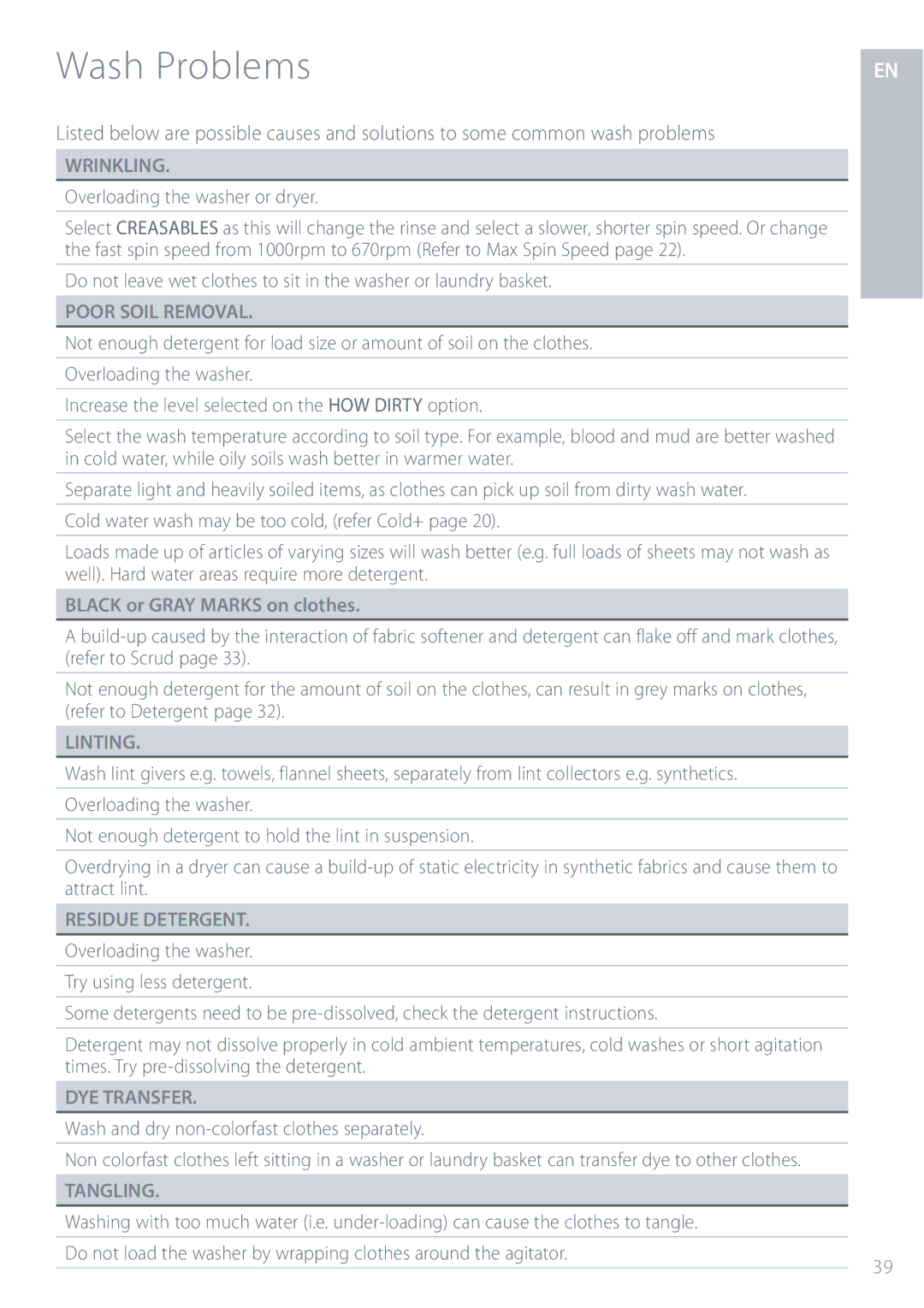
Wash Problems
Listed below are possible causes and solutions to some common wash problems
WRINKLING.
Overloading the washer or dryer.
Select CREASABLES as this will change the rinse and select a slower, shorter spin speed. Or change the fast spin speed from 1000rpm to 670rpm (Refer to Max Spin Speed page 22).
Do not leave wet clothes to sit in the washer or laundry basket.
POOR SOIL REMOVAL.
Not enough detergent for load size or amount of soil on the clothes.
Overloading the washer.
Increase the level selected on the HOW DIRTY option.
Select the wash temperature according to soil type. For example, blood and mud are better washed in cold water, while oily soils wash better in warmer water.
Separate light and heavily soiled items, as clothes can pick up soil from dirty wash water.
Cold water wash may be too cold, (refer Cold+ page 20).
Loads made up of articles of varying sizes will wash better (e.g. full loads of sheets may not wash as well). Hard water areas require more detergent.
BLACK or GRAY MARKS on clothes.
A
Not enough detergent for the amount of soil on the clothes, can result in grey marks on clothes, (refer to Detergent page 32).
LINTING.
Wash lint givers e.g. towels, flannel sheets, separately from lint collectors e.g. synthetics.
Overloading the washer.
Not enough detergent to hold the lint in suspension.
Overdrying in a dryer can cause a
RESIDUE DETERGENT.
Overloading the washer.
Try using less detergent.
Some detergents need to be
Detergent may not dissolve properly in cold ambient temperatures, cold washes or short agitation times. Try
DYE TRANSFER.
Wash and dry non-colorfast clothes separately.
Non colorfast clothes left sitting in a washer or laundry basket can transfer dye to other clothes.
TANGLING.
Washing with too much water (i.e.
Do not load the washer by wrapping clothes around the agitator.
EN
39
